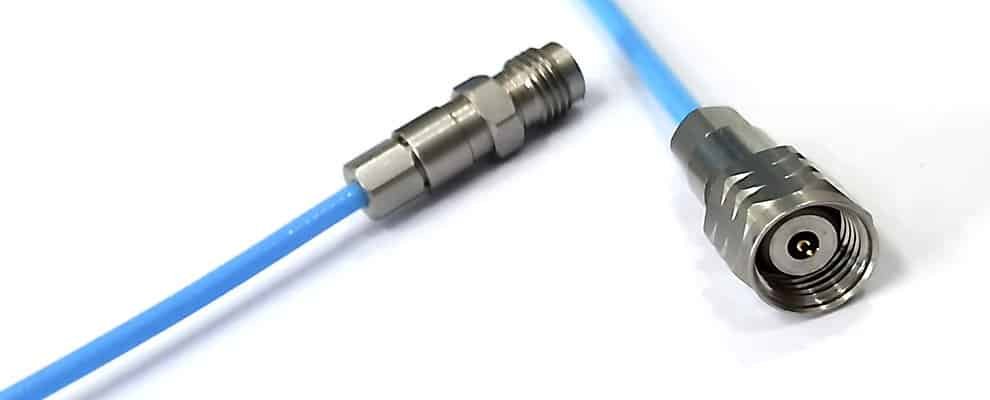How far can electrical signals travel through 1.85 mm rf cable?

17
Jun
 Coaxial Cable Assembly
Coaxial Cable Assembly
 Microwave Test Cable
Microwave Test Cable
 Coaxial RF Connector
Coaxial RF Connector
 Coaxial RF Adapter
Coaxial RF Adapter
 Coaxial RF Termination
Coaxial RF Termination
 Coaxial RF Test Probe
Coaxial RF Test Probe
 Coaxial RF Attenuator
Coaxial RF Attenuator
 RF Switch
RF Switch Coaxial RF Power Dividers
Coaxial RF Power Dividers
.In high-frequency communication, selecting the right cable is vital for signal integrity. The 1.85 mm RF cable, a precision-engineered coaxial cable, is a top choice for reliable signal transmission. But how far can an electrical signal travel through a 1.85 mm RF cable before it weakens? This article explores the challenges, analyzes key factors, and offers solutions to maximize performance for B2B applications.
Signal loss is a universal issue in RF cables, including the 1.85 mm coaxial cable. As signals travel, they lose strength due to attenuation, which grows with distance. For industries like telecommunications, aerospace, and broadcasting, knowing the maximum transmission distance without degradation is critical for system efficiency.
Several elements determine how far a signal can travel through a 1.85 mm RF cable. These include cable design, signal frequency, attenuation, and external conditions.
The 1.85 mm coaxial cable features a central conductor, dielectric insulator, shielding, and outer jacket. High-quality materials and precise assembly reduce signal loss, enabling longer transmission distances.
Signal frequency significantly affects transmission distance. Higher frequencies experience more attenuation, losing strength faster. For example, a 10 GHz signal fades quicker than a 1 GHz signal in a 1.85 mm RF cable. Matching frequency to application is key.
Attenuation, measured in dB/m, indicates signal weakening over distance. In 1.85 mm RF cables, this varies with frequency and cable quality. For instance, a cable with 0.5 dB/m attenuation at a given frequency and a 10 dB loss tolerance allows a 20-meter range.
Temperature, humidity, and electromagnetic interference (EMI) impact performance. Heat can increase attenuation, moisture can degrade signals, and EMI from nearby devices can shorten effective distance in 1.85 mm coaxial cables.
To optimize 1.85 mm RF cable performance and extend signal range, consider these practical steps:
Opt for 1.85 mm RF cables with low attenuation, superior shielding, and quality dielectrics. These features minimize loss and support longer distances.
Avoid sharp bends or twists during installation, as they damage the cable and increase signal loss. Secure the 1.85 mm coaxial cable with proper management to reduce stress.
For extended runs, use amplifiers or repeaters to boost signals along the 1.85 mm RF cable. This effectively increases the maximum transmission distance.
Check for damage, corrosion, or moisture regularly. Early fixes keep the 1.85 mm coaxial cable performing optimally.
Mastering signal transmission in 1.85 mm RF cables is essential for robust communication systems. By choosing quality cables, installing them correctly, using boosters when needed, and maintaining them, businesses can achieve reliable, long-distance performance. These strategies meet B2B demands, ensuring efficiency and sparking potential inquiries.
 Coaxial Cable Assembly
Coaxial Cable Assembly
 Microwave Test Cable
Microwave Test Cable
 Coaxial RF Connector
Coaxial RF Connector
 Coaxial RF Adapter
Coaxial RF Adapter
 Coaxial RF Termination
Coaxial RF Termination
 Coaxial RF Test Probe
Coaxial RF Test Probe
 Coaxial RF Attenuator
Coaxial RF Attenuator
 RF Switch
RF Switch Coaxial RF Power Dividers
Coaxial RF Power Dividers Coaxial Cable Assembly
Coaxial Cable Assembly
 Microwave Test Cable
Microwave Test Cable
 Coaxial RF Connector
Coaxial RF Connector
 Coaxial RF Adapter
Coaxial RF Adapter
 Coaxial RF Termination
Coaxial RF Termination
 Coaxial RF Test Probe
Coaxial RF Test Probe
 Coaxial RF Attenuator
Coaxial RF Attenuator
 RF Switch
RF Switch Coaxial RF Power Dividers
Coaxial RF Power DividersNo account yet?
Create an Account